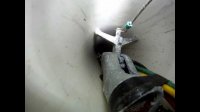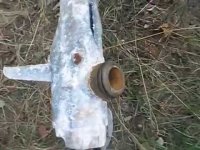Alaskan_pipedreams
New Member
Hello all,
We are in Haines, Alaska, our well pump, (20yrs old) went out, so we pulled the well, replaced the pump, sent her back down. We cannot get the pitless to seat properly. The issue is the crows foot. We can’t get it to seat correctly, to apply the pressure for the seal. Just curious if anyone is some tips and tricks on how to get this handled. The pitless makes it connection, 110” below the top of the wellhead.
We are in Haines, Alaska, our well pump, (20yrs old) went out, so we pulled the well, replaced the pump, sent her back down. We cannot get the pitless to seat properly. The issue is the crows foot. We can’t get it to seat correctly, to apply the pressure for the seal. Just curious if anyone is some tips and tricks on how to get this handled. The pitless makes it connection, 110” below the top of the wellhead.


